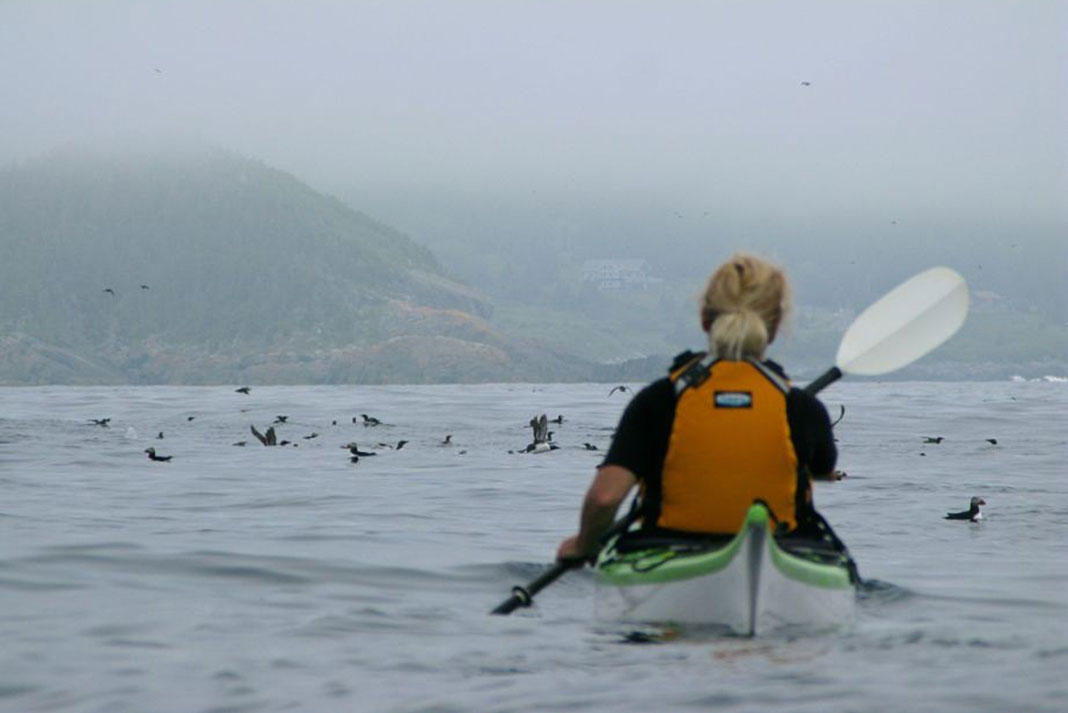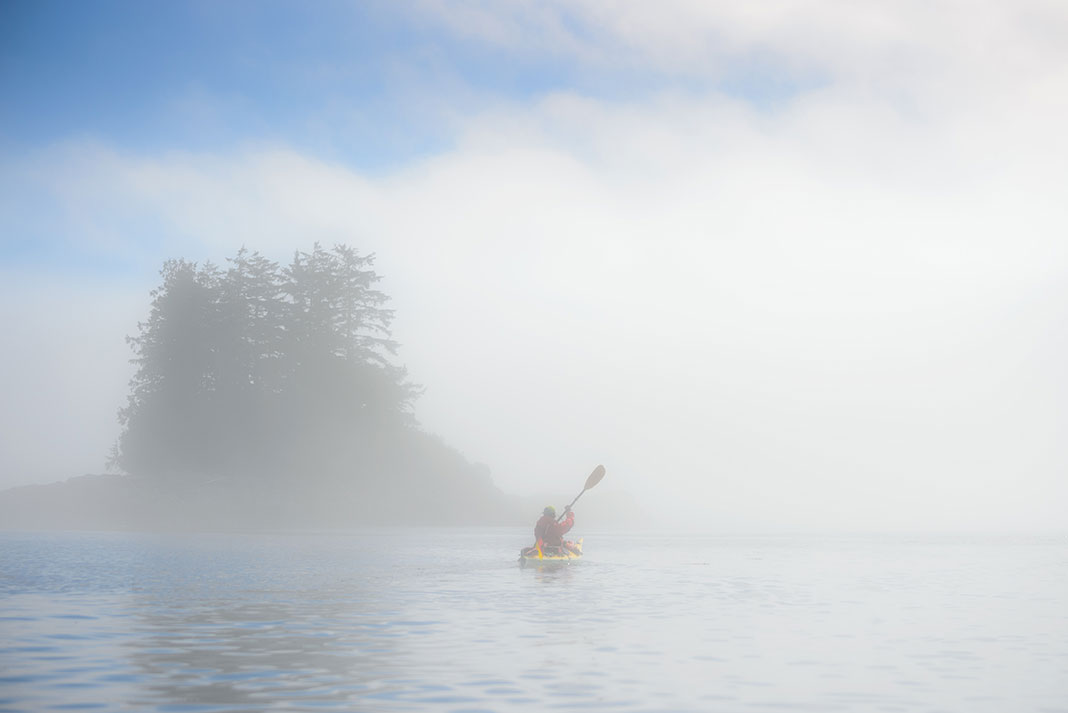Sea kayaking in the fog when out on big open water and navigating to an intended way-point can be intimidating even for the seasoned paddler. There are numerous variables such as wind, currents, bad weather and low visibility that can work to turn a great day on the water into a less-than ideal situation. Writer and avid kayaker Conor Mihell shares with us his tips for staying the course and reaching your intended destination.
6 techniques for sea kayaking in the fog
It’s only when we pull out a chart and compare it to reality that my friend Craig and I realize the magnitude of the endeavor we’re about to attempt. Our destination, tiny Caribou Island, a mop-topped sandbank in the heart of Lake Superior, lies 22 nautical miles from our gravel beach on the south shore of Michipicoten Island.

Today, the yawning gulf of open water depicted on the chart is represented in real life by a swirling mass of gauzy fog. A quick compass bearing taken on the chart reveals the truth: To stray merely 2.5 degrees on either side of our intended bearing would see us paddling over 100 kilometers until we hit the nearest land. Even the best-made plans would have us playing a dangerous game of dice. We’re fogbound.
1 Dead reckon
Before setting off in the fog, measure the distance of your intended route using a map or chart. Then estimate your time of passage by dividing the distance by your average paddling speed. Keep tabs of your progress on the water with a wristwatch, and have a backup plan just in case your target doesn’t appear on time. This usually means a direct bearing to the nearest sizeable point of land.
2 Aim off
Always err on the side of caution when planning a low-visibility crossing. Intentionally follow a compass bearing toward a prominent landmass—or ‘backstop’—adjacent to your destination. Aiming off is especially important in currents and windy conditions, or on long crossings, where the risks of screwing up are considerably higher.
3 Trust your compass
While GPS units are handy for gauging your speed, the distance from your destination, and adjusting to the vagaries of wind and current, a deck-mounted compass is your best ally in navigating low-vis conditions because of its simple, hands-free operation. So long as you’ve remembered to pack the cooking pots and canned beans in the back hatch, a compass is also extremely accurate. Deploy your rudder or skeg while following a compass course to keep on track.
4 Group dynamics
Clearly defined lead and sweep roles help while navigating in the fog. The leader follows a compass course while the paddler at the rear of the pack confirms the group’s progress on the bearing. In dense fog, visibility can be just a few feet so sticking close together to maintain visual contact is essential.

5 Rules of the road
If you must cross shipping lanes in foggy conditions, use your VHF radio to inform mariners of your intended route and time of passage. Rumor has it that placing a wad of tinfoil beneath your hat works as a radar deflector, but don’t count on its effectiveness.
6 Handrail
It’s always more interesting, safer and less stressful to paddle a few extra miles and follow the coastline rather than striking off in the fog across open water when the option exists.
This article was first published in the Spring 2012 issue of Adventure Kayak Magazine. Subscribe to Paddling Magazine’s print and digital editions, or browse the archives.
Visibility can be just a few feet when kayaking in dense fog, so it’s essential to stick close together to maintain visual contact. | Feature photo: Frank Busch/Unsplash



Foggy conditions usually are present with little wind speed. Pay attention to any changes in wind speed or wind direction. Winds are usually one of the primary determinants in paddling speed. In dense fog with near zero wind, you should be able to hear sound over greater distances than when there is a 5-10 knot wind. It also means group paddlers should be able to stay within voice communication with each other. Everyone should have a working whistle or air horn immediately accessible and have sound signals prearranged with the group. One signal for position or location. Three long blasts for need assistance or danger. SOS could be reserved for need assistance. Point is the group should decide together what group signals should be. Finally paying attention to brightening or darkening sky can confirm direction as in sunsetting in west or changing weather requiring revision of paddling plan.